1. I feel fortunate to have met Ted Berrigan, just once, during my first trip to New York in October 1982. I really wanted to meet Alice Notley, his wife, whose poetry I knew and admired more than his. A mutual friend, Tom Carey, gave me their phone number (they lived on St. Mark’s Place in the East Village—so bohemian) and said to give them a call. If the phone wasn’t unplugged, he informed me, someone would pick up. I dialed several times before Alice answered. I gushed. She said that I could visit them the following afternoon. October 9 (a Saturday)—I just looked up the date in one of the books she inscribed. I had a bunch of them for her to sign. Tim Dlugos suggested I also bring some of Ted’s books for him to sign—Tim had manners. On my way to their apartment, I stopped at St. Mark’s Bookshop and bought four of Ted’s books; the prices were written inside each book in pencil, and I had no eraser: would that be a dead giveaway that I was just being polite? If he did notice the prices, it didn’t matter: he was very nice to me. (If he hadn’t been, would I have actually read the books and become an admirer?) He signed them lying on his back in bed, a cigarette dangling from his mouth, ashes dusting his beard and shirt. He asked me if I’d go buy some Pepsi. “Sure.” I went to the corner and bought Pepsi for Ted and a six-pack of Budweiser (tall can) for Alice and myself. I’m so happy he signed a copy of The Sonnets, a book I would teach decades later. In one of the other books, he wrote, “For David, Civilized Poet and graceful guest, all the best, Ted Berrigan.” Thank you, Ted.
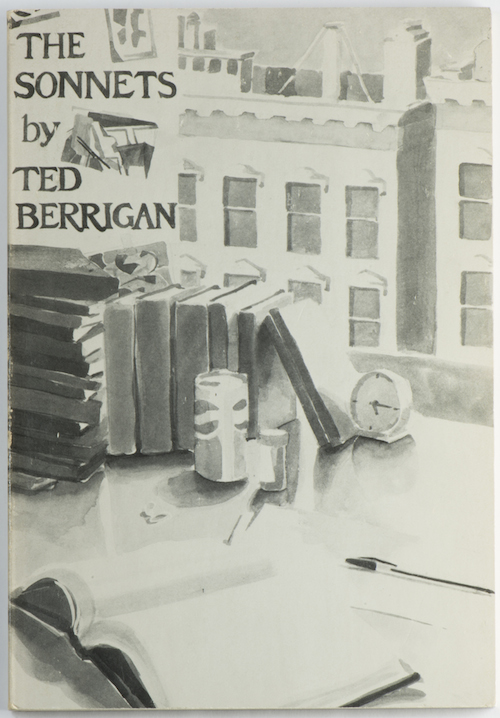
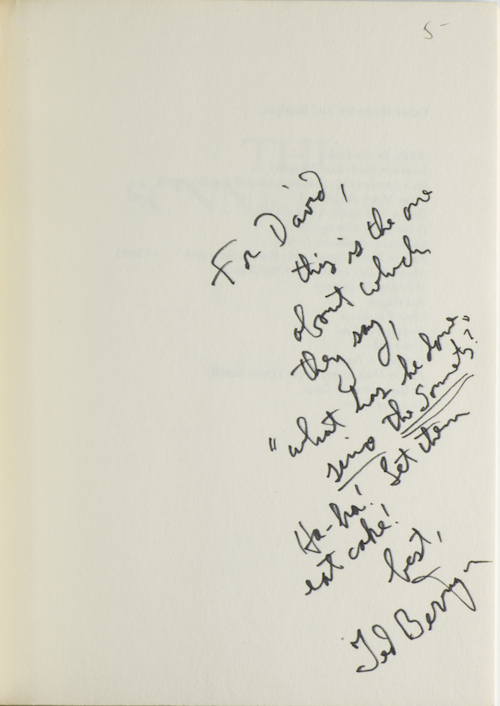
2. Joe Brainard signed a lot of books for me, and he always signed them exactly the same way: “FOR DAVID WITH LOVE, JOE.” Printed, all caps, “LOVE” underscored four or five times. This is the Full Court Press edition of I Remember published in 1975, the first full-length version of the beloved work. At some point I put the Marilyn Monroe bookmark in it (right where it belonged): “I remember when I went to a ‘come as your favorite person’ party as Marilyn Monroe.”
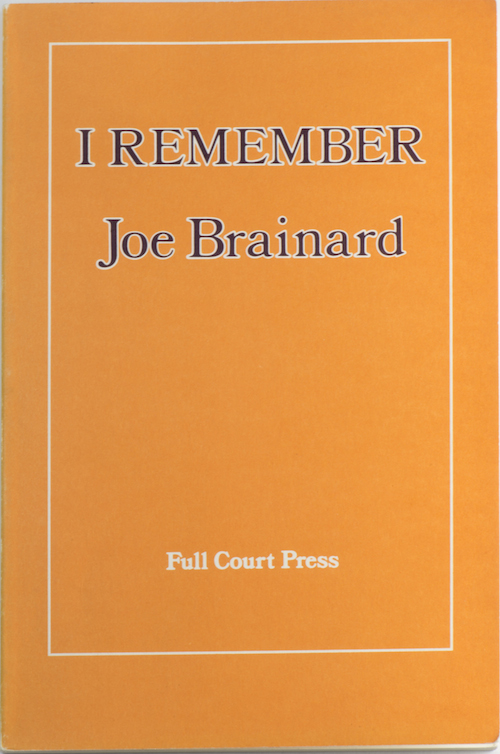
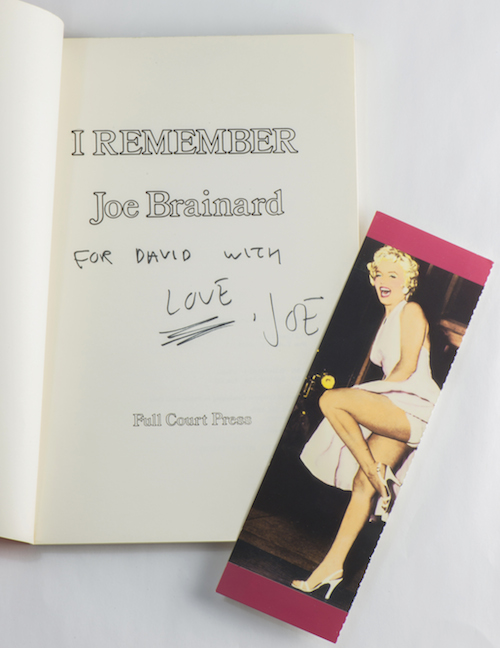
3. Dennis Cooper was one of my first poet friends. We met in 1979, in Los Angeles, at one of my first poetry readings. He walked up and introduced himself, said he wanted me to become part of his “gang.” We palled around quite a bit until he moved to New York in 1983. Our friendship resumed in person when I moved to New York five years later; we’d corresponded in between. Dennis had the air of an older brother, even though we were the same age. He taught me, by example, how to be a young poet in the world: write the best poems you can write, then publish and read them as often as you can. And send them to your idols; maybe they’ll write back. In the early eighties, nothing was cooler than Dennis’s Little Caesar Magazine and Press. He also curated the reading series at Beyond Baroque Literary/Arts Center in Venice, California. Other members of Dennis’s “gang” included Amy Gerstler, Jack Skelley, Bob Flanagan, Ed Smith, Kim Rosenfield, and Benjamin Weissman. We were all in our twenties (actually, I think Kim was still in her teens), dazzled by the scene. From Dennis, I learned how to run my own press (Sherwood) and how to push myself to give poetry readings (I had terrible stage fright then; still do sometimes). He introduced me to the poetry of the New York School, and to other young poets in San Francisco, Chicago, and New York. This all had a huge impact on my writing and my life. “If you don’t tell the truth,” Dennis once advised, “you’re a creep.” I’ve never forgotten that, or so many other things from those days.
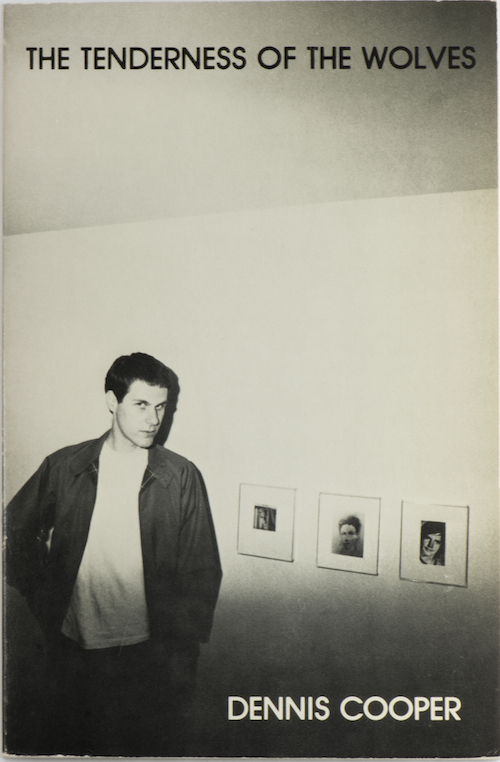
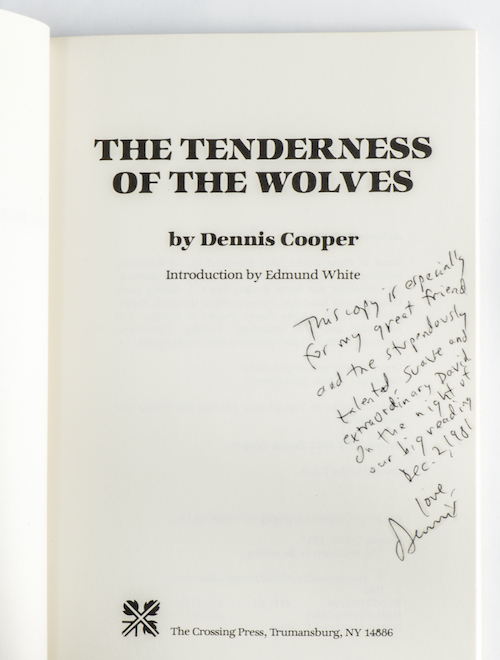
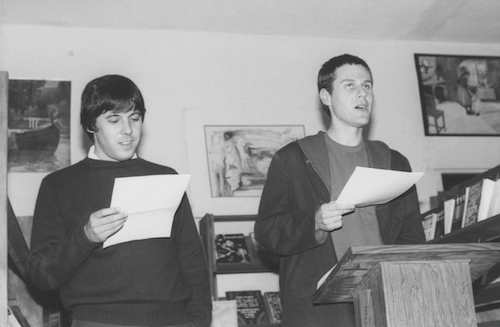
4. I studied with Allen Ginsberg at Brooklyn College in the late eighties. I found him problematic as a teacher—he didn’t seem to know what to make of my poems (in part because they weren’t imitations of his), and that made me dig in my heels. A fellow student recently reminded me that one week in workshop, after I read a poem, Allen said, “Well, this isn’t very good, is it.” I’d blocked that out of my memory. But it was always great to be in his presence—he was Allen Ginsberg. Later, after I graduated, he praised my work publicly. And was kind to me when my mother died. Was he my friend? He said so when he inscribed my copy of White Shroud. He signed it at a gathering on May 22, 1989 at his apartment on 12th Street. After he wrote and drew in his book, he went to a bookshelf and took down one of mine. I’d mailed it to him years before I was his student. Inside was a typed letter, which he pointed out I had failed to date. “You should date everything,” he said. Oh Allen, since that night I have.
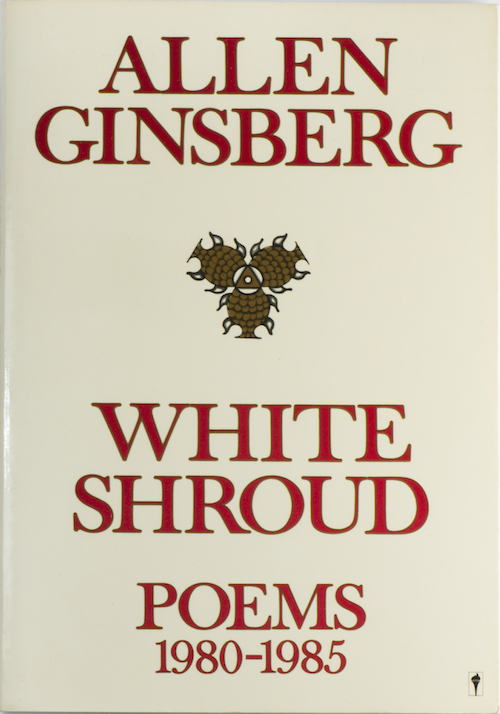
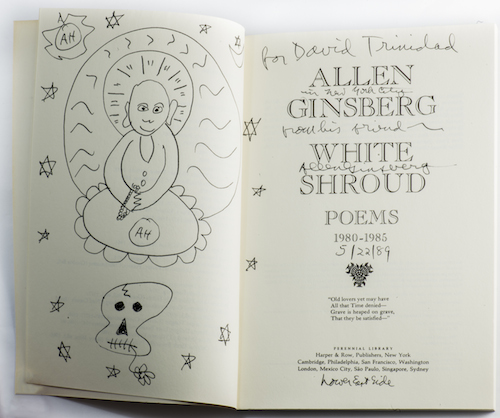
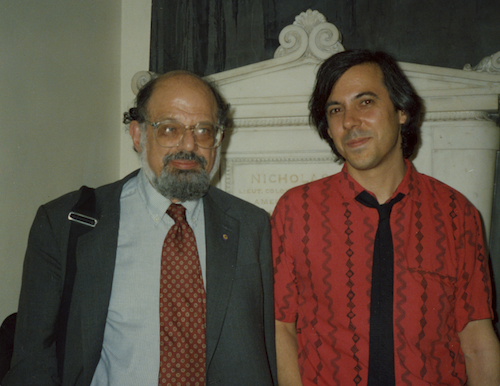
5. Back to October 9, 1982. After Ted signed his books, Alice and I sat in the front room of their railroad flat and shared that six-pack of Bud. It was Indian summer; she said I must have brought the warm weather with me from California. She signed my copy of How Spring Comes “Indian Spring”—so charming. Anselm came in and out of the room. (He was only ten years old! Who’d’ve thought that years later we would be colleagues at Rutgers University, that he and Karen and I would watch movies together.) Ted yelled to Alice from the other room: “I told you someday they’d come to see you.” She signed ten books and chapbooks for me that day, including her first, 165 Meeting House Lane, a “C” Press mimeo book that I’d been lucky enough to find at Gotham Book Mart. She signed For Frank O’Hara’s Birthday “Delirious afternoon.” For this starstruck young poet, it truly was.
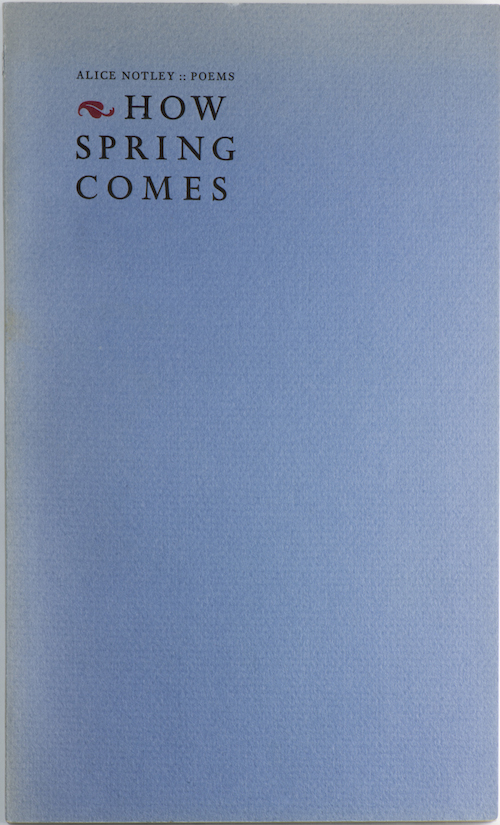
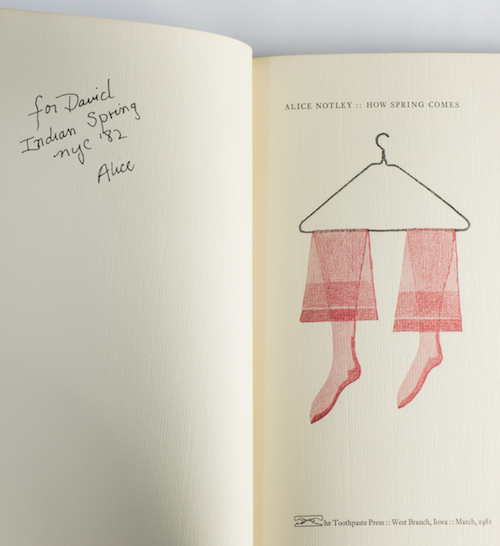
6. When I was in my early thirties, there was no poet I admired more than James Schuyler. His voice gave me the key to the leap I needed to take between my first and second books. In 1985, I sent him my second book, Monday, Monday, along with a fan letter. I didn’t expect a response; he had a reputation for being somewhat of a recluse, in his room at the Chelsea Hotel. It felt like a miracle when he did respond—with an inscribed copy of Hymn to Life and a three-page letter (dated “some fuckin’ date in Sept.”) in which he said, “Thank you for writing the poems you do. I feel sincerely privileged to read them.” A few weeks later, I received another, bigger miracle: a typescript of a poem he’d dedicated to me, “Mood Indigo.” He invited me to call him “Jimmy” or “Jim”; I chose “Jimmy.” We corresponded for three years. I consider our correspondence one of the most important relationships of my life. Writing was such a struggle; knowing he liked my work helped me to persevere. After I moved to New York in 1988, I saw him weekly (for a movie and Chinese food), but he was harder to talk to in person. I missed the intimacy of our letters. He signed all of his books for me. In one, he referred to a movie we’d seen: “Remember ‘Married to the Mob’?” We also saw Bull Durham and Field of Dreams—Jimmy loved Kevin Costner.
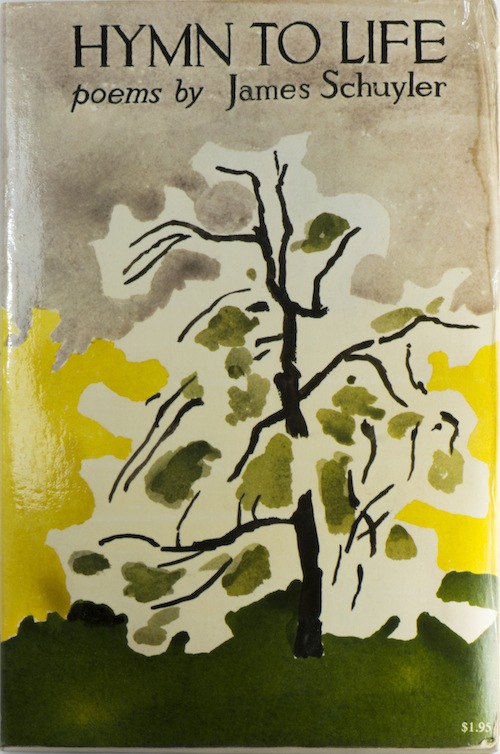
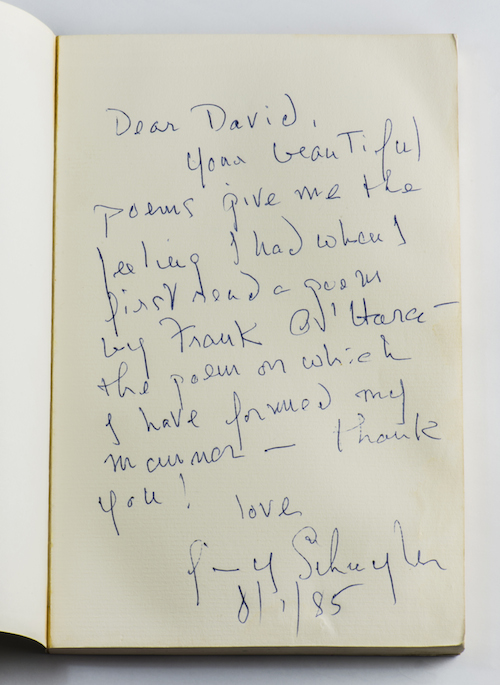
7. I bought this at least ten years ago, at Serendipity Books, a great antiquarian bookstore in Berkeley, California, for $200.00. Or possibly $250.00. My favorite book by one of my favorite poets. I love that on the inside cover the original owner (I can’t make out the first letter of her last name; I think it’s an “L”—Diane Lager?) provided the exact date (Allen, you were so right!) that Anne Sexton signed it: November 12, 1962. And that she critiqued the reading: “Anne Sexton read 13 of her poems, a realist, direct, excellent—I enjoyed it very much.” Who counts the number of poems a poet reads? Diane Lager, evidently. I have a lot of signed books by poets I’ve met, but I would have to say this one, by a poet I didn’t meet (Sexton died two years before I published my first poem), an idol whose work helped shape my aesthetic—“a realist, direct”—is a true treasure.
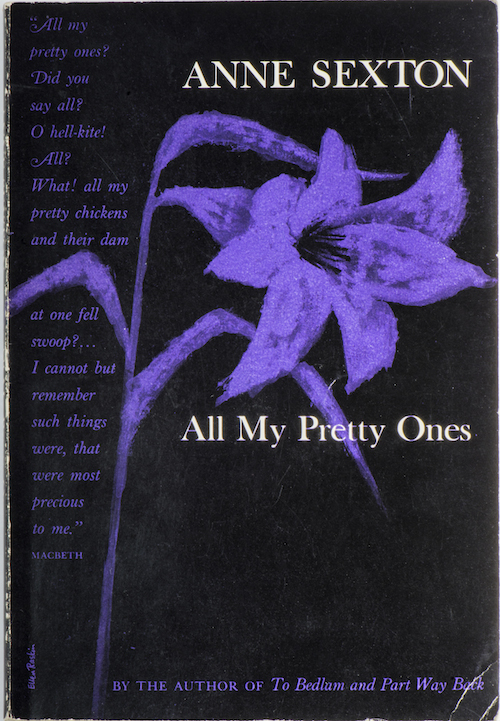
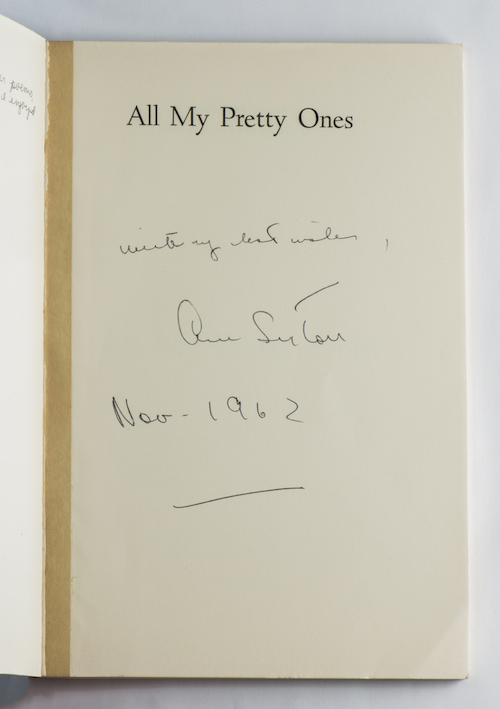
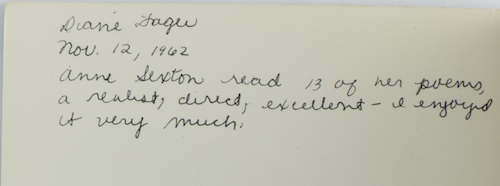
8. Ann Stanford: the first poet I met. I was eighteen when I enrolled in her Introduction to Literature class at California State University, Northridge in 1972. Such a different world then. That’s one of her big themes: the changing world and how we hold up, morally, amidst change. How it affects our character. She was fascinated by the dark mysteries of nature, of the self. Her poems taught me, before I’d yet lost much in life, about “the ache of the intensely lost.” “Things disappear,” she says in “Lost Objects,” “One glove, one lover, half, one shoe . . . till we become / Lost pieces of ourselves.” I took many workshops and independent studies with her. Her encouragement made me believe I could really be a writer. In 1977, I went to the publication party for In Mediterranean Air. In her inscription she called me “a fine poet & friend.” I floated out of the bookstore, high on the free wine and her words: she considered me a fine poet, a friend. How could I have foreseen, in my exhilaration, that we would lose Ann in 1987. And that, frustrated that her work had fallen out of print, I would join forces with another of her students (Maxine Scates, who studied with Ann before I did) and co-edit Holding Our Own: The Selected Poems of Ann Stanford for Copper Canyon Press in 2001. “Motion holds all.” I am grateful to have had such a kind and exemplary mentor—admirable in every way.
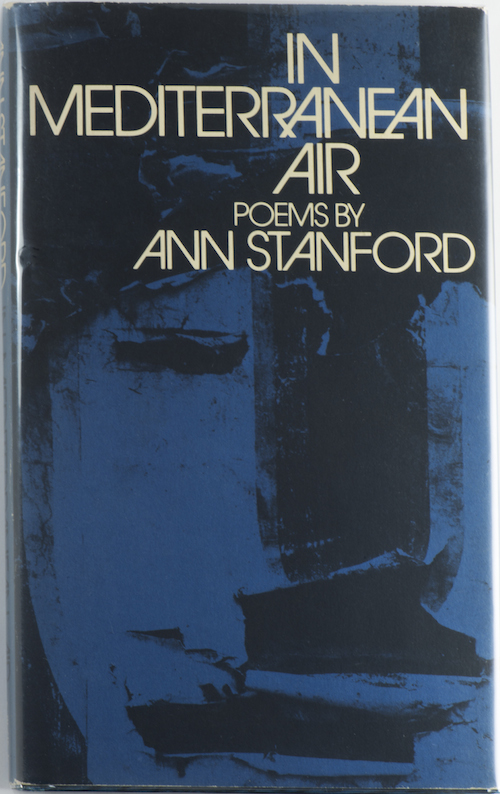
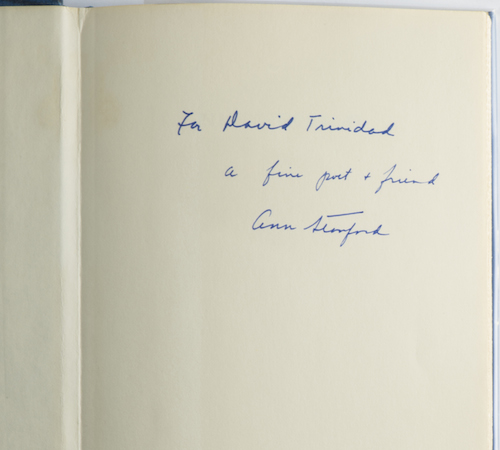
9. In the late nineties, while bookshopping in Boston with Ira Silverberg, Naomi Yang, and Damon Krukowski, I spotted this goody on top of a random pile. I might have passed it up if I hadn’t noticed the price (only $7.50) and the fact that it was inscribed. I got very excited, quickly purchased it (fearing the bookseller would notice what was surely an oversight), and told my companions that I’d meet them outside. When we were all in the car, I showed them my find. And got even more excited when I discovered, tucked in the book, a handwritten letter (on New Directions stationary, where Swenson worked). The recipient of the book and letter was Joyce Mekeel (1931-1997), a composer and harpsichordist who lived in the Boston area. Swenson sent these to her in April 1962 as a get-well greeting when Mekeel was suffering from a bout of phlebitis (which Swenson, with typical wit, calls “Flea-bite-us”). I met Swenson once, in 1979, at the Dorland Mountain Colony in Temecula, California. I respected her (she was a good friend of Ann Stanford’s) and liked her work, which I revisited recently when the Library of America published her Collected Poems. Swenson is so good.
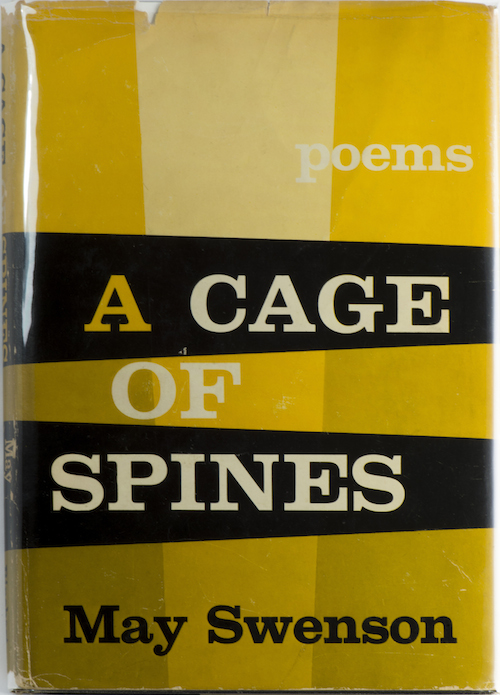
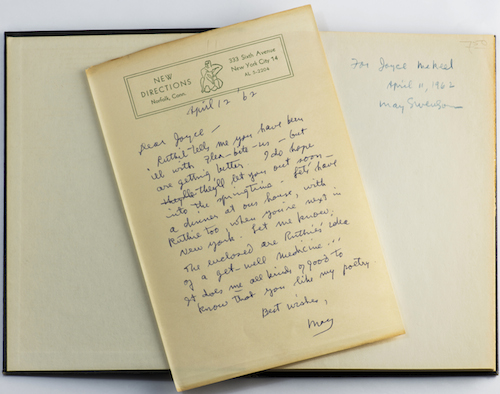
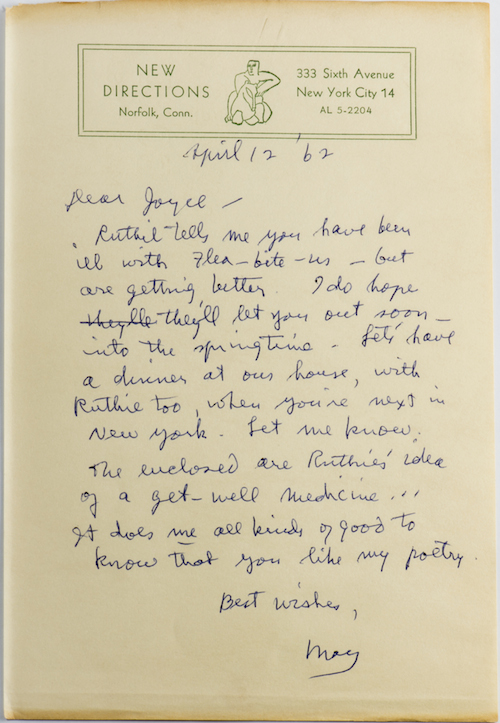
10. Editor Raymond Foye presented me with this copy of John Wieners’s Cultural Affairs in Boston signed by himself, Robert Creeley (who wrote the preface), and Wieners (twice). Within weeks of moving to New York, I found myself sitting across from Wieners at a dinner at an Indian restaurant. We started to converse, but after a few coherent sentences he swerved into some alternate realm. He was certain we’d met years earlier in Canada (where I’d never been), in Toronto, I think. It was confusing to me, but everyone just accepted that that was the way John was. When I read (and fell in love with) his poetry, I understood better. His poems come from a place apart, his own desperately fragile, celebrity-ridden, drug-ravaged reality. Where else but in Wieners can you find lines like “when he put his lips to places I cannot name” or “o letters of fire fall on my head.” His poems make me swoon with identification. They also instruct. “Without image / we are bereft.” “What one knows today will be gone tomorrow. / One reason to write.” Foye, Wieners’s literary executor, has said that a collected Wieners is in the works. This is fabulous news. It’s always heartening when excellent neglected poets emerge from the shadows, fully embodied in their collected works.
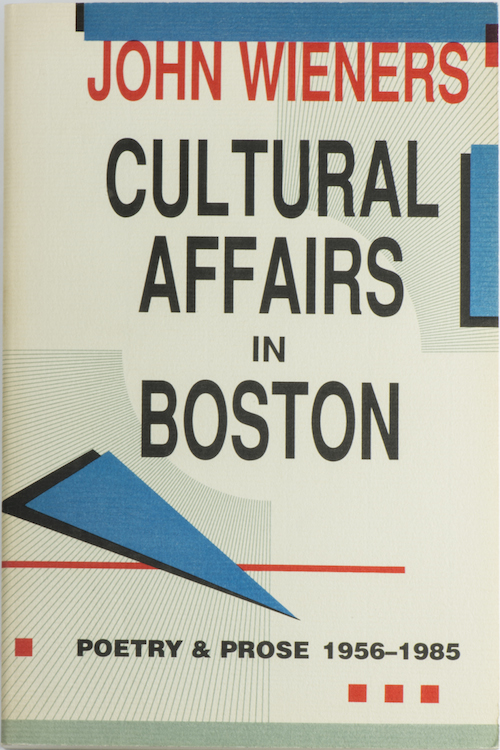
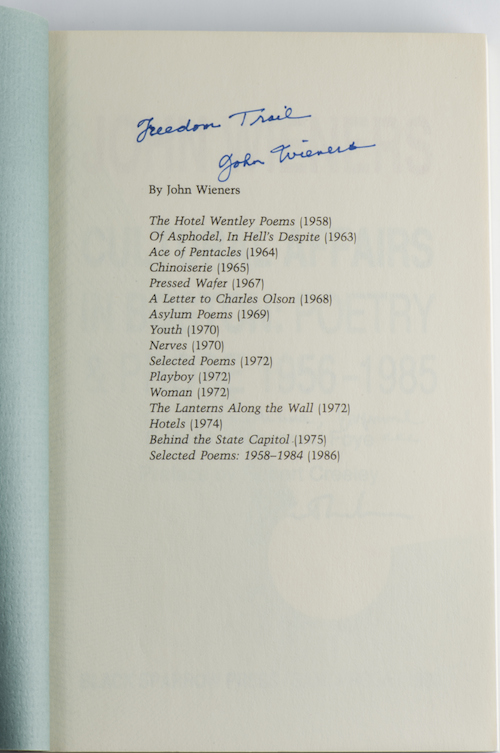
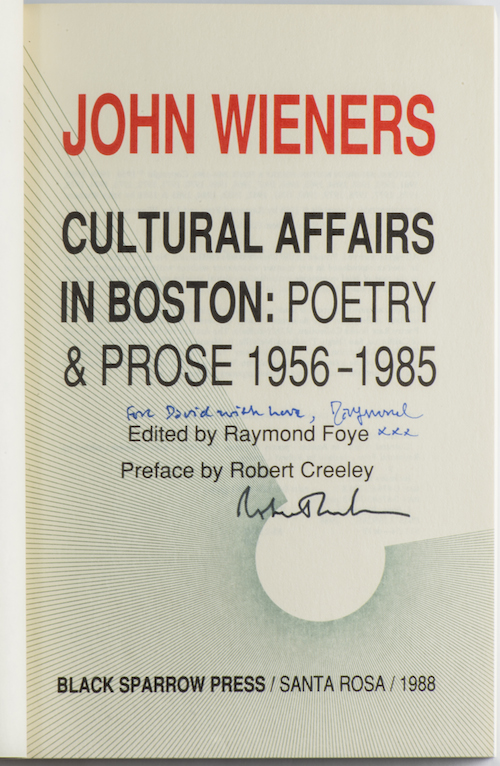
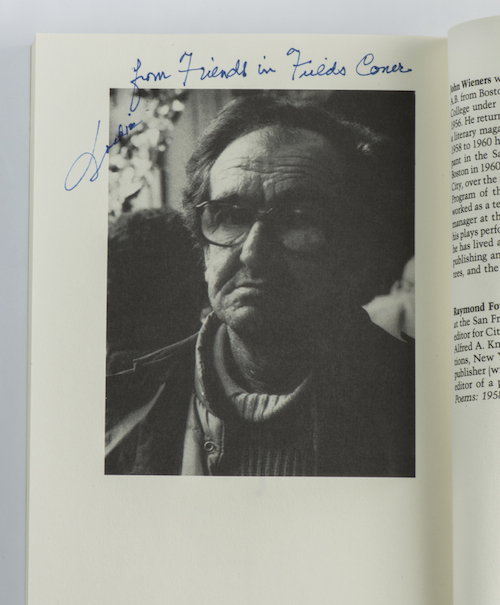
David Trinidad is the author of more than a dozen books, including Peyton Place: A Haiku Soap Opera ...
Read Full Biography

